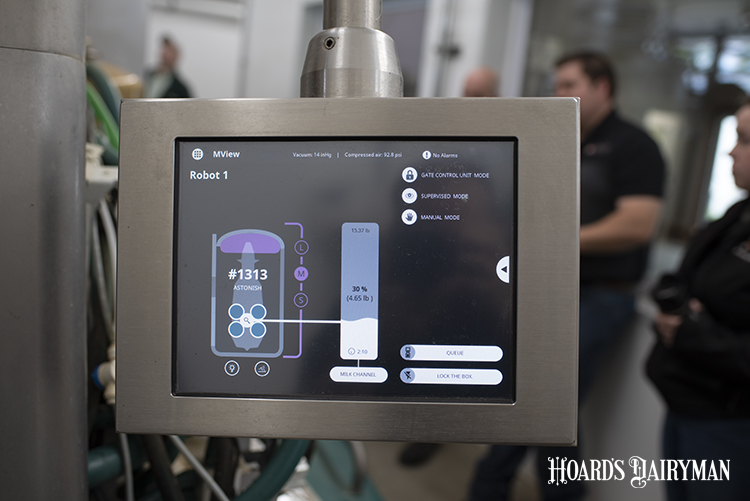
Technology often makes our lives better. On the farm, this is especially true when we are able to pinpoint cow health, production, and reproduction information that’s been streamlined by the tools many farms use every day — activity monitors, herd management software, automated calf feeders or milking systems, and more.
It can be tempting, or maybe overwhelming, to feel the need to incorporate as many aspects of technology as possible. Four tech-savvy farms, though, know that’s not always the way to go. It pays to be selective about what will work best for you and your herd.
“I love the integration of technology and cows. I’d invite all technologies forward if it’s going to help everyone be better,” said Lucas Bokma, who farms in Nova Scotia, Canada, with six robotic milkers. “But you have to make sure your technology isn’t redundant.”
Bokma and three other dairy farmers who run their businesses with automatic milkers and calf feeders, video cameras, and other technological tools shared their perspectives in a panel during this year’s Connect Summit. After describing their operations, they were asked if there’s such a thing as too much technology.
Echoing Bokma’s statement, Rodney Elliott of Drumgoon Dairy in South Dakota emphasized that the information that will come from the technology is the most important factor to consider when deciding if a new tool would be a useful investment. “If you’re not going to use the data, there’s not much point in doing it,” he said.
Drumgoon Dairy also uses automatic milking systems, in addition to a parlor, and they utilize a video system to score lameness. That was one of the most time-consuming tasks on the farm, and visually scoring their large herd wasn’t very efficient or accurate. Lameness scores were a piece of data they needed to make their herd management decisions, so when Elliott found a tool that provided it more easily, he knew it was something that would benefit their cows and employees.
Pagel’s Ponderosa Dairy in Wisconsin went through similar decisions when they added a parlor management system and space that allows them to do most treatment of animals while they are on the rotary parlor. Instead of employees spending time and effort looking up cows and finding them in the barn, or even sorting cows out, the program allows employees to work efficiently in one area while the system alerts them on a screen of each upcoming cow and any treatments it needs.
The workspace includes a machine that allows them to administer all vaccines and hormones without needles; instead, pressure is used. Incorporating these tools added an element of employee efficiency that they didn’t have before, herd manager Chris Syzdel shared. The investment has made a difference.
Of course, technology is just part of the picture of farm operations. “It’s not going to fix bad management,” said Iowa dairy farmer Dan Venteicher. He really appreciates how their automatic milkers and feeders have allowed cows to set their own schedule and reduced competition but knows that using the tools still require good cow sense. Venteicher admitted their system was too complicated at first, and that it’s possible to overthink. When that happens, remember to consider what the cow would do, he shared.








